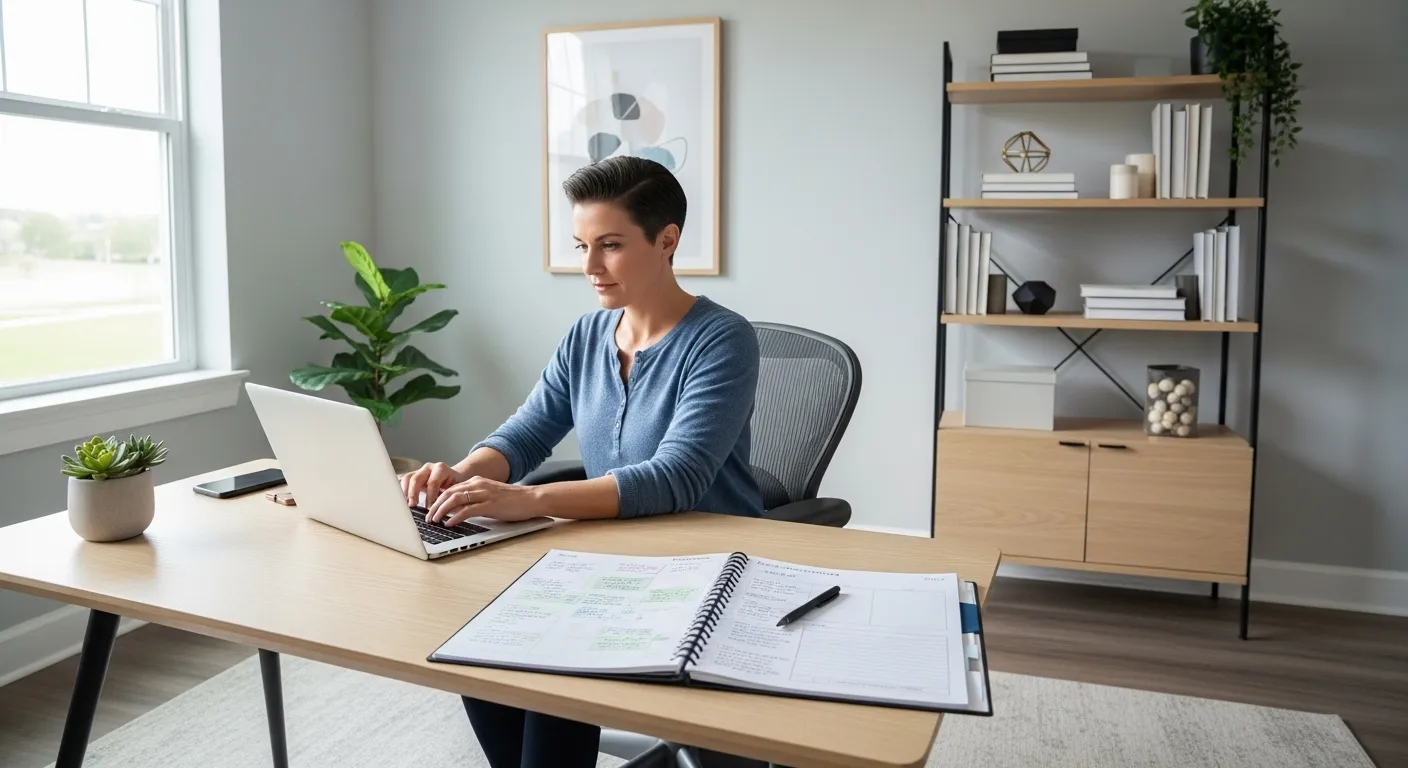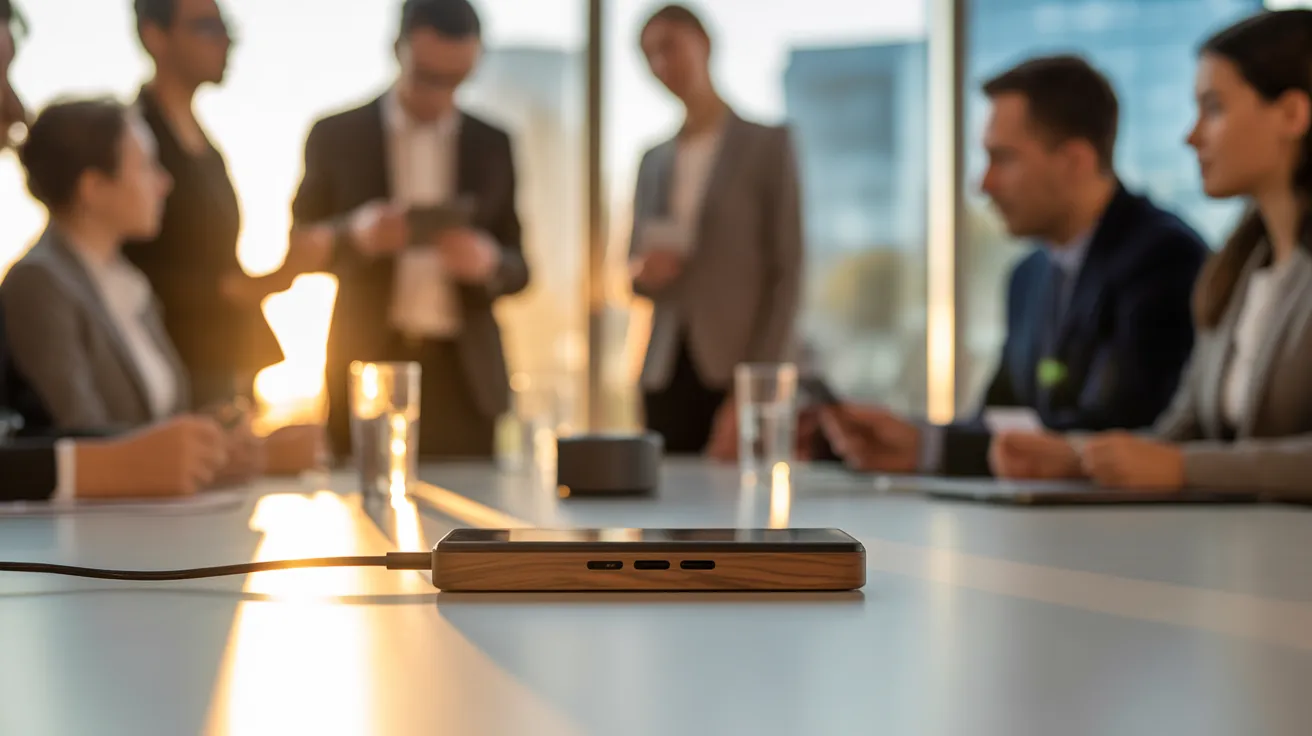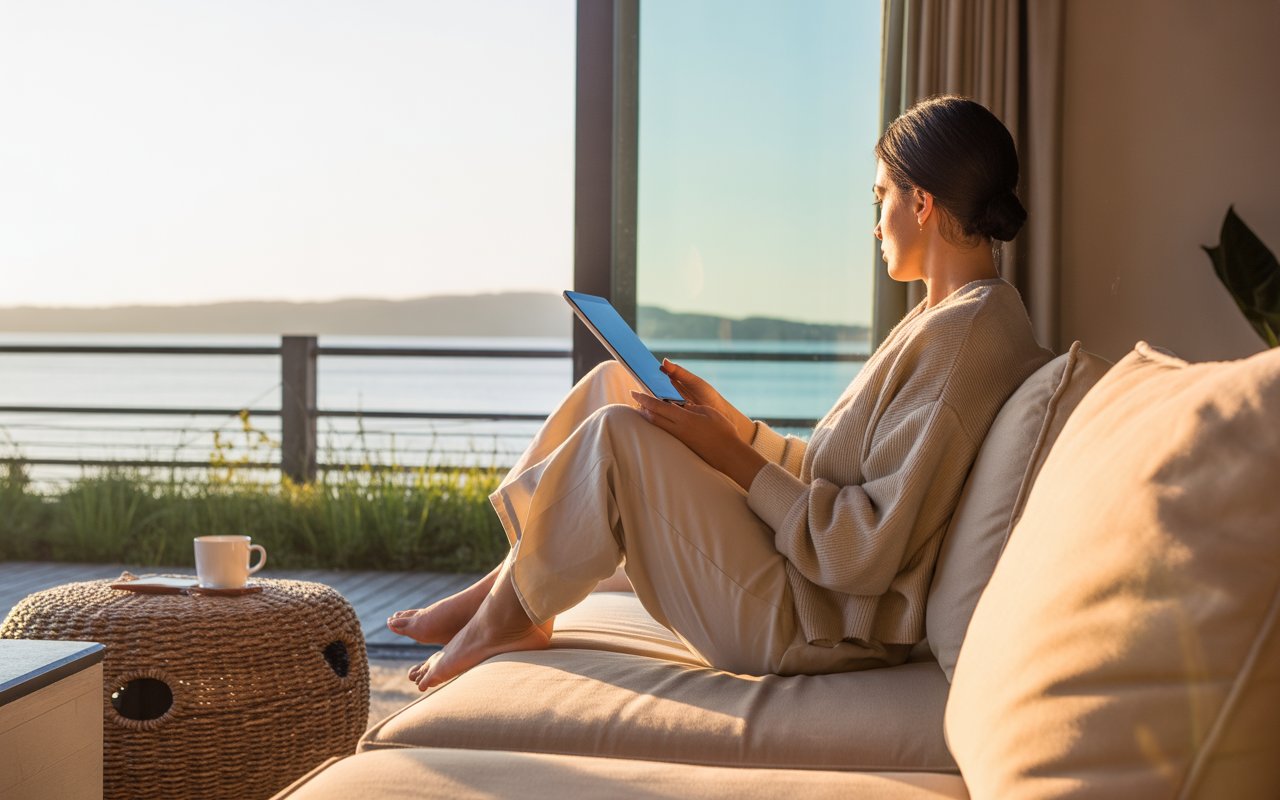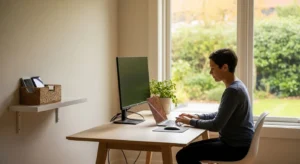
📚 Table of Contents
- Understanding the Tug-of-War for Your Attention
- Building Your Digital Toolkit: Proactive Routines
- Mastering Your Phone’s Focus Modes
- The Art of Notification Triage
- Designing a Mindful Home Screen
- Using App Timers as a Gentle Nudge
- The Heart of the Matter: Creating Your Digital-Free Environment
- Choosing Your First “Digital-Free” Zone
- The Bedroom Sanctuary: Reclaiming Your Sleep
- The Mindful Meal: The Tech-Free Dining Table
- Establishing Cues for Deep Work and Relaxation
- Putting It All Into Practice: Worked Examples
- Navigating Common Hurdles and Troubleshooting
- Handling “Relapse” Moments
- Managing FOMO (Fear of Missing Out)
- Explaining Your New Boundaries to Others
- Frequently Asked Questions (FAQ)
- What about privacy? If I’m reducing screens but use smart speakers or other “ambient” tech, am I trading one problem for another?
- I work night shifts and have a completely different sleep schedule. How can I adapt these ideas?
- How can I implement a tech-free home zone with kids or teenagers who are resistant?
- My job in a fast-paced urban environment requires me to be available 24/7. How can I possibly create a digital-free zone?
- Your Journey to Mindful Living Starts Now
You know the feeling. It’s the end of a long day, and you finally sit down to relax. You plan to read a book, chat with your partner, or simply enjoy the quiet. But then, a notification buzzes. A quick check of email turns into a 20-minute scroll through social media. The book remains unopened. The conversation is punctuated by the glow of a screen. The quiet is gone.
This subtle, constant pull of our devices is a shared modern experience. Our attention, our most precious resource, feels perpetually fractured. We live in a state of continuous partial attention, never fully present in our physical space because a part of our mind is always tethered to the digital world. The cost is high: diminished focus, strained relationships, and a persistent, low-grade anxiety.
But what if there was a way to reclaim that focus without giving up the technology that connects and supports us? What if you could create pockets of peace and presence right within your own home?
This is the promise of creating a “digital-free” zone. It’s not about a radical, anti-tech overhaul. It’s about mindful living and intentional design. It’s about drawing a simple, gentle boundary that tells your brain, “In this space, you can rest. In this space, you can be fully present.”
This guide will walk you through the why and the how of creating a no-phone zone in your home. We’ll explore the psychology behind digital distraction, provide practical steps to manage your devices, and help you design physical spaces that nurture your well-being. This isn’t about restriction; it’s about liberation. It’s your first step toward building a healthier, more balanced relationship with technology, one room at a time.
Understanding the Tug-of-War for Your Attention
Before we can build effective boundaries, it helps to understand what we’re up against. The feeling of being irresistibly drawn to your phone isn’t a personal failing or a lack of willpower. It’s the result of a powerful psychological system, carefully engineered to capture and hold your attention. Recognizing these mechanics is the first step toward disarming them.
The Psychology of Distraction
At the heart of our device habits is a neurotransmitter called dopamine. You’ve likely heard of it in relation to pleasure, but its role is more about motivation and anticipation. When you see a notification, your brain releases a small amount of dopamine, creating a desire to see what the reward is—a like, a message, a new email. This creates a powerful feedback mechanism.
This is often called a dopamine loop. In simple terms, it’s a three-step process: a cue (your phone buzzes), a routine (you check the phone), and a reward (you see a notification). The more you repeat this loop, the more ingrained the habit becomes. Your brain learns that the phone is a reliable source of small, satisfying rewards, and it begins to crave that stimulation, especially during moments of boredom or discomfort.
The system is made even more powerful by the principle of variable rewards. If you knew you’d get exactly one “like” every time you checked an app, the novelty would wear off. But you don’t know. Sometimes there’s nothing, sometimes there’s one, and sometimes there’s a flood of engagement. This unpredictability is what makes the experience so compelling, much like a slot machine. You keep pulling the lever (refreshing the feed) in anticipation of a potential jackpot. This concept is a cornerstone of behavioral psychology, and you can learn more about its foundational principles from sources like the American Psychological Association.
How Modern Apps Are Designed for Engagement
App developers and tech companies understand this psychology deeply. They employ entire teams of experts to design features that maximize the time you spend on their platforms. These aren’t sinister plots; they are business models built on an attention economy. The more you look, the more ads you see, and the more data is collected.
Think about the features you interact with daily. The infinite scroll on social media feeds ensures there is never a natural stopping point. The “pull-to-refresh” gesture is a direct digital translation of a slot machine lever. Red notification badges create a sense of urgency and an “open loop” in your mind that feels nagging until you close it by checking the app.
Features like “streaks” on platforms like Snapchat gamify engagement, creating social pressure to log in daily lest you break a chain and disappoint a friend. All these elements work together to keep you tethered, making the conscious choice to disengage feel surprisingly difficult. Acknowledging this design is crucial. You’re not just fighting your own habits; you’re pushing back against a meticulously crafted system. Creating a tech-free home zone is your way of changing the rules of the game in your favor.

Building Your Digital Toolkit: Proactive Routines
Creating a digital-free zone is as much about managing your internal environment (your habits and device settings) as it is about your external one (your physical space). Before you designate a single no-phone zone, you can make your devices significantly less intrusive. By setting up proactive routines, you transform your phone from a demanding taskmaster into a useful tool that waits for your command. Here’s how to start.
Mastering Your Phone’s Focus Modes
Most modern smartphones come equipped with powerful features designed to help you manage distractions. Often called “Focus” or “Do Not Disturb” (DND), these settings allow you to control who and what can reach you at specific times.
Do Not Disturb (DND) is a setting that silences all incoming calls, texts, and notifications while it is active. You can typically customize it to allow calls from specific contacts (like family members) or repeated calls from the same number, ensuring you don’t miss a true emergency.
Instead of just turning DND on and off manually, get into the habit of scheduling it. Set a “Sleep” focus to automatically activate an hour before your bedtime and turn off when you wake up. Create a “Work” focus that only allows notifications from work-related apps and colleagues during your office hours. A “Personal” or “Mindful” mode could block everything except calls for when you’re at the dinner table or reading. This automates your boundaries, requiring less willpower in the moment.
The Art of Notification Triage
The single most powerful change you can make to your digital habits is to perform a notification audit. Not all notifications are created equal. Most are just noise designed to pull you back into an app. The practice of reviewing and culling your alerts is a form of notification batching, where you intentionally decide when and how you receive information, rather than letting it interrupt you randomly.
Go into your phone’s settings and look at the notification permissions for every single app. For each one, ask yourself: “Do I truly need to know this information the second it happens?” You’ll find the answer is almost always no. Sort them into three categories:
1. Essential (Keep On): Phone calls, text messages from key contacts, calendar alerts for appointments, and perhaps messages from a primary work communication app.
2. Useful but Not Urgent (Turn Off Badges and Sounds): Notifications from apps like news outlets or email. You want to see them when you open the app, but you don’t need them to interrupt your day. Turn off the sound and the red badge, and let them be delivered silently.
3. Noise (Turn Off Completely): The vast majority of notifications fall here. Likes, comments, new followers on social media, reminders from a game, promotional alerts from a shopping app. Turn these off entirely. You will miss absolutely nothing of value, and the peace you gain will be immense.
Designing a Mindful Home Screen
Your home screen is the digital equivalent of your front door. If it’s cluttered with distracting, candy-colored apps, you’re more likely to get pulled into a time-wasting vortex every time you unlock your phone. The goal is to turn your phone into an intention-driven tool, not a mindless entertainment device.
First, remove all social media, news, and gaming apps from your primary home screen. Move them to the second or third page, preferably grouped into a folder labeled “Distractions” or “Time Wasters.” This small amount of friction—having to swipe and tap an extra time—is often enough to make you pause and ask, “Do I really want to open this right now?”
Reserve your main home screen for utility apps only: your calendar, maps, camera, notes, and maybe a weather or meditation app. This “search, don’t scroll” method encourages you to unlock your phone with a specific purpose in mind, rather than opening it out of boredom and seeing what catches your eye.
Using App Timers as a Gentle Nudge
Finally, use your phone’s built-in screen time tools to set daily limits for your most-used apps. If you find yourself losing an hour to Instagram every evening, set a 20-minute timer. When the time is up, the phone will give you a notification and often grey out the app icon. While you can usually bypass it, this gentle interruption is a powerful moment for mindfulness. It snaps you out of the trance of scrolling and gives you a chance to make a more conscious decision about how you want to spend the rest of your evening.

The Heart of the Matter: Creating Your Digital-Free Environment
Once you’ve tamed your device with new routines and settings, it’s time to address your physical space. A digital-free zone is a designated area in your home where screens are simply not allowed. This isn’t about creating a dead zone for technology; it’s about creating a living zone for people. By making a conscious agreement—with yourself and others in your household—you reclaim spaces for connection, rest, and deep focus.
Choosing Your First “Digital-Free” Zone
The key to success is to start small and choose a space where you’ll get the most benefit with the least resistance. Don’t try to banish all tech from your entire home overnight. Instead, pick one area and commit to it. For most people, the best place to start is the bedroom. It’s a private space where the benefits of being screen-free are immediate and profound. Other excellent candidates include the dining table or a comfortable armchair designated for reading.
The goal is to associate that physical space with a specific state of mind. When you enter the bedroom, your brain should know it’s time to rest and disconnect. When you sit at the dining table, it’s time to eat and connect with others. Creating this tech-free home environment helps build these mental associations automatically.
The Bedroom Sanctuary: Reclaiming Your Sleep
If you make only one change, make it this: get all screens out of your bedroom. This is the cornerstone of creating a no-phone zone and has a powerful, positive impact on your health. The primary reason is sleep. Our devices emit high-energy visible light, often called blue light. This specific wavelength is particularly effective at suppressing the production of melatonin, the hormone that tells your body it’s time to sleep.
According to research highlighted by organizations like the Sleep Foundation, exposure to blue light in the hours before bed can disrupt your circadian rhythm, making it harder to fall asleep and reducing the quality of your rest. But the problem isn’t just biological. Having your phone by your bed keeps your brain in a state of alert. You might be tempted to check work email one last time or get drawn into a stressful news article, flooding your system with cortisol and adrenaline right when it should be winding down.
To make this work, you need a couple of analog replacements. Buy a simple, old-fashioned alarm clock so you can’t use the excuse of needing your phone to wake up. Establish a “charging station” for all devices in another room, like the kitchen or living room. Make it a household rule that all phones “go to bed” there an hour before you do. Replace the time you would have spent scrolling with reading a physical book, journaling, light stretching, or talking with your partner. The bedroom should be a sanctuary for sleep and intimacy, nothing more.
The Mindful Meal: The Tech-Free Dining Table
The dining table is another powerful place to establish a digital-free zone. When we eat while scrolling or watching something, we engage in mindless eating. We eat faster, chew less, and are less attuned to our body’s hunger and fullness cues. This can lead to overeating and poor digestion.
More importantly, a tech-free table reclaims mealtime as a moment for human connection. Whether you live with family, a partner, roommates, or by yourself, this is a designated time to be present. If you’re with others, it’s a chance to have a real conversation without the constant interruption of notifications. If you’re eating alone, it’s an opportunity to savor your food and give your mind a genuine break. This simple practice of mindful living can transform your relationship with both food and the people you share it with.
Establishing Cues for Deep Work and Relaxation
For those who work from home, the lines between work life and home life can become hopelessly blurred. Creating environmental cues is essential. Designate a specific desk or corner of a room as your “work zone.” When you are in that space, you are working. When you leave it, you are done for the day. Critically, your work technology—especially your laptop—should stay in that zone. Don’t bring it to the couch to answer “just one more email” or to the bed to “finish up a project.” This physical separation helps your brain transition more effectively between work mode and rest mode.

Putting It All Into Practice: Worked Examples
Understanding the theory is one thing, but applying it to the rhythm of daily life is another. The idea of a digital free zone can feel abstract until you see what it looks like in practice. Here are two simple, realistic examples you can adapt for your own life: a brief evening wind-down and a balanced weekend digital detox.
A 10-Minute Evening Wind-Down Routine
The goal of this routine is to create a clear buffer between your “connected” day and your restful night. It’s short, simple, and focuses on transitioning away from screens before you even enter the bedroom.
The Time: Approximately 60 to 90 minutes before you plan to be asleep.
The Steps:
1. The “Phone Bedtime” Alarm: Set a daily alarm on your phone for this time. When it goes off, it’s the signal to begin your wind-down. This is your final check of any urgent messages for the night.
2. The Charging Station Ritual: After that final check, take your phone and any other personal devices (like a tablet or smartwatch) to their designated charging station outside the bedroom. Plug them in and leave them there. The physical act of walking away is a powerful cue to your brain that the digital day is over.
3. The Analog Transition (10+ Minutes): For at least the next ten minutes, engage in a completely screen-free activity. This doesn’t have to be complicated. You could:
- Prepare a cup of herbal tea.
- Do some gentle stretching.
- Tidy up the living room or kitchen.
- Read a chapter of a physical book or magazine.
- Write down three things you’re grateful for in a journal.
- Chat with your partner or family about their day.
This simple routine breaks the cycle of late-night scrolling and prepares your mind for sleep. It ensures that by the time your head hits the pillow, your brain is no longer buzzing with the blue light and stimulus of a screen.
A Realistic Weekend Digital Detox
A weekend “detox” doesn’t have to mean turning off your phone from Friday to Monday. That’s often impractical and can create more anxiety than it solves. Instead, a realistic detox focuses on intentional disengagement for specific periods, allowing you to use technology as a tool, not a default source of entertainment.
Saturday Morning Unplugged: Make a rule to stay off all screens—phone, TV, computer—until noon. Wake up and enjoy a slow morning. Make a nice breakfast, read the paper, go for a walk, or tackle a home project. You’ll be amazed at how long and relaxing a morning can feel without the immediate pull of the digital world.
Mindful Outing: If you go out on Saturday afternoon, use your phone for its utility. Use maps to navigate, use a music app to play a podcast in the car, use the camera to take photos. However, make a conscious pact with yourself not to mindlessly scroll social media or check email while you are out. Be present in your activity.
Sunday Evening Analog Planning: Instead of planning your week on a digital calendar or to-do list app on Sunday night, try using a paper planner or a simple notebook. Spend 30 minutes mapping out your priorities and schedule for the week ahead. This helps you organize your thoughts without the risk of getting sidetracked by notifications and the endless vortex of the internet just before bed.

Navigating Common Hurdles and Troubleshooting
Adopting new habits is rarely a perfectly linear process. You will have moments where you forget the new rules, feel a powerful urge to scroll, or face pressure from others. This is completely normal. The key is not to aim for perfection but for progress, and to approach these challenges with self-compassion and a practical mindset.
Handling “Relapse” Moments
There will be a night when you find yourself scrolling in bed long after you intended to stop. Or a dinner where you unconsciously pull out your phone and place it on the table. The instinct might be to feel guilty or frustrated, as if you’ve failed. Instead, try to reframe it as a learning opportunity.
When you catch yourself breaking your own rule, gently stop and get curious. Don’t judge, just observe. What triggered the behavior? Were you feeling bored? Anxious about a work email? Lonely? Identifying the underlying feeling can help you find a non-digital way to address it next time. If you were bored, perhaps you could have a book or a puzzle readily available. If you were anxious, maybe a few deep breaths or a short walk would help more than checking your phone. Every “relapse” is just data that helps you refine your approach.
Managing FOMO (Fear of Missing Out)
One of the biggest psychological barriers to disconnecting is FOMO. It’s the nagging feeling that if you’re not constantly connected, you’ll miss out on an important conversation, a breaking news story, or a fun social event. This anxiety is real and is fueled by the design of social media platforms, which are built to showcase a highlight reel of everyone else’s lives.
The antidote to FOMO is to cultivate JOMO—the Joy of Missing Out. Reframe your digital-free time not as something you’re losing, but as something you’re gaining. You are gaining uninterrupted focus on your book. You are gaining a real, present conversation with your partner. You are gaining a peaceful night’s sleep. Over time, as you experience the tangible benefits of your tech-free home zones, the joy of your present reality will become far more compelling than the fear of a hypothetical digital event you might be missing.
Explaining Your New Boundaries to Others
Implementing a no-phone zone can be challenging if you live with other people. Your new habit might feel like a judgment on their habits, even if it’s not intended that way. Communication is key. Frame your request as a personal goal, not a demand.
Use simple, non-confrontational “I” statements. For example:
“I’ve been having a really hard time sleeping lately, so I’m going to try keeping my phone out of the bedroom. Would you be willing to try it with me?”
“I’ve noticed I’m really distracted during our meals together, and I want to be more present with you. I’m going to start leaving my phone in the other room during dinner.”
By explaining your “why,” you invite collaboration rather than resistance. Lead by example. When others see the positive changes in your mood and focus, they may become more curious and willing to join you in creating a tech-free home environment.

Frequently Asked Questions (FAQ)
What about privacy? If I’m reducing screens but use smart speakers or other “ambient” tech, am I trading one problem for another?
This is an excellent point. Digital wellness is about more than just screen time; it’s about your overall relationship with technology. If privacy is a concern, treat smart home devices with the same intention. You can disable microphones when not in use, regularly review your privacy settings and stored data, and choose not to place these devices in sensitive areas like the bedroom. The goal is conscious use, whether the technology has a screen or not.
I work night shifts and have a completely different sleep schedule. How can I adapt these ideas?
The principles remain exactly the same, but the timing shifts to match your life. Your “bedroom sanctuary” rule should apply whenever you sleep, whether that’s from 10 PM to 6 AM or 10 AM to 6 PM. Your “evening wind-down” becomes your “pre-sleep wind-down.” Schedule your Do Not Disturb mode to align with your sleep block. The core idea is to protect your primary rest period from digital intrusion, regardless of when it occurs.
How can I implement a tech-free home zone with kids or teenagers who are resistant?
This requires a family conversation and agreement, not a top-down decree. Start by explaining the “why”—that the goal is better sleep, more connection, and less distraction for everyone. Involve them in the process of choosing the zones (e.g., “Should we make the dining table our first tech-free zone?”). It’s also crucial to model the behavior yourself. If they see you adhering to the rules, they are far more likely to respect them. You might also consider using parental control tools to help enforce time limits and “downtime” on their devices, framing it as a tool to help everyone stick to the family plan.
My job in a fast-paced urban environment requires me to be available 24/7. How can I possibly create a digital-free zone?
Very few jobs truly require 24/7 availability, though many have a culture that implies it. The key is to differentiate between “urgent” and “important.” Work with your team to establish clear communication protocols for genuine emergencies (e.g., a phone call) versus standard work that can wait until morning (e.g., an email or chat message). You can then customize your phone’s focus modes to let emergency calls through while blocking everything else. Even a 30-minute digital-free zone at the dinner table or the last hour before sleep can provide significant mental health benefits without jeopardizing your professional responsibilities. Research from institutions like the National Institutes of Health often explores the connections between chronic stress from being “always on” and health outcomes.

Your Journey to Mindful Living Starts Now
Creating a digital-free zone in your home is a profound act of self-care. It’s a declaration that your attention, your peace, and your presence are valuable and worth protecting. Remember, this is not about achieving a perfect, tech-free existence. It’s about making small, intentional shifts that, over time, add up to a more balanced and fulfilling life.
You don’t need a grand overhaul. You just need to begin. Choose one small change to implement this week. The momentum from that single, positive step will inspire the next.
Here are a few simple ideas to get you started:
1. Charge your phone outside your bedroom tonight. Just for one night. See how it feels. Get a cheap alarm clock if you need one. This single change can have the biggest impact on your sleep and morning focus.
2. Pick one app and turn off its notifications completely. Choose the noisiest one—perhaps Instagram, TikTok, or a news app. You can still check it when you want to, but it will no longer be able to demand your attention.
3. Have one meal without a screen. Put your phone in another room and simply focus on the food and the quiet, or on the conversation with the people you are with. Notice the difference.
By taking control of your routines and your environment, you are not just creating a no-phone zone; you are building a sanctuary for your mind. You are choosing focus over distraction, connection over content, and mindful living over a life lived on autopilot.
Disclaimer: The information provided in this article is for informational purposes only and does not constitute medical or psychological advice. It is not intended to be a substitute for professional advice, diagnosis, or treatment. Always seek the advice of your physician or another qualified health provider with any questions you may have regarding a medical or mental health condition.






